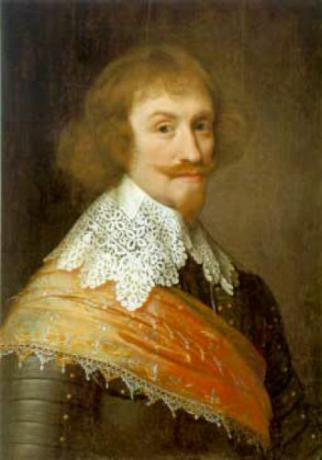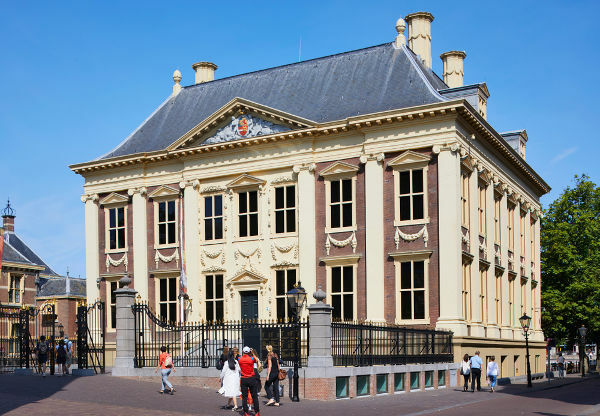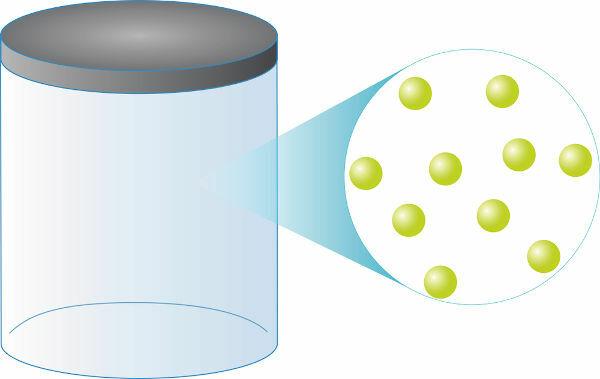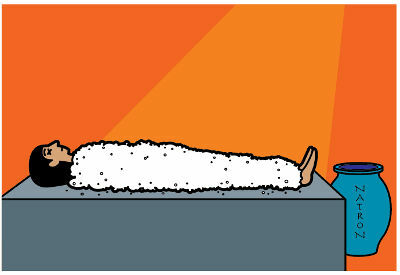Mauritius of Nassau was a Germanic count and military man who was known to have been sent by the Dutch to administer the Pernambuco region during the period that the Dutch dominated the region. Maurício de Nassau was known for being a humanist who appreciated the sciences and the arts and tried to develop both in Brazil.
He returned to Europe by decision of the West India Company, the company that brought him here, due to its indebtedness and disagreements with Nassau. A few years after Maurício de Nassau left Recife, the Pernambuco region was reconquered by the Portuguese in 1654.
Origins of Mauritius of Nassau

João Maurício de Nassau-Siegen (in German Johann Moritz von Nassau-Siegen) was born on June 17, 1604, in Dillenburg, a region that was part of the Holy Roman Empire and which is currently located in Germany.
Mauricio de Nassau's father was called John VII, he was the Count of Nassau-Siegen, and his mother was the Duchess
Daisy of Schleswig-Holstein-Sonderburg. Maurício de Nassau was the first child of the second marriage of João VII de Nassau and, in all, his father had 25 children.Maurice of Nassau received an education in accordance with what was required of the young people of the 17th century aristocracy. Until the age of ten, he remained in his family home and was educated by humanists of little expression in the Siegen region. After that, he ended up leaving to study far from his family.
In 1614, Maurice of Nassau traveled to the home of his older sister, named Juliana de Nassau-Dillenburg. Juliana was married to Count Maurice of Hesse-Kassel and they both lived on Maurice's land in Kassel. O Earl of Hesse-Kassel he was an important tutor in Mauritius de Nassau's learning process.
After Kassel, Maurice of Nassau left for Basel, Switzerland, where he studied for a year. After that, he went to other places in Europe, such as Geneva, Strasbourg and Zurich. Finally, Maurício de Nassau studied at the Colegium Mauritianum, a school of great reputation in that region. At that college, he studied numerous subjects, such as History, Music, Theology, etc. It is worth mentioning that Maurício de Nassau was raised in environments that professed the Calvinism.
Researcher Mariana de Campos Françozo states that Maurício de Nassau lived in a model of courtship that highly valued the practice and study of science and the arts and that this was fundamental for the formation of the Dutchman. Years later, he would try to reproduce this model when it was sent to Brazil|1|.
At the age of fifteen, he returned to Siegen, as his father was unable to continue financing his studies (Mauricio de Nassau's family was getting poorer at the time). From Siegen, he moved to Leeuwarden in the Netherlands region (now Holland) to live with his uncle, Count Willem Lodewijk van Nassau.
Along with his uncle, Maurício de Nassau started his career as military and quickly prospered in that craft. He was promoted several times and served in battles of the Eighty Years War (war fought between the Netherlands and Spain) and in Thirty Years War (war fought between Catholics and Protestants). He ended up gaining prestige and recognition for being victorious in the Siege of Schenkenschans, reconquering this city that was in the hands of the Spaniards until 1636.
The year 1636 turned out to be a remarkable year for Maurício de Nassau in another way. Famous and well-established in The Hague, Maurice of Nassau received an offer from the West India Company to be the general governorfrom the colony of the Dutch in the Pernambuco region. Maurício de Nassau accepted the offer and assumed command of political and military actions in the region invaded by the Dutch.
Accessalso: Why did the Dutch decide to invade Brazil in the 17th century?
Coming from Nassau to Brazil

Maurício de Nassau arrived in Pernambuco in January 23, 1637 and was accompanied by about 2700 soldiers, plus employees of the West India Company (WIC, its acronym in Dutch). Nassau also made a point of bringing artists and scientists with the intention of making records about Brazil in paintings and scientific studies|2|.
One of the first measures taken by Maurício de Nassau upon arriving in Brazil was to look for restructure economically the region. The Dutch had conquered Pernambuco in 1630 and, until 1637, tried to consolidate their domain in the region. The war against the Portuguese had contributed to economically weaken the region.
Historians Lilia Schwarcz and Heloísa Starling emphasize that Nassau encouraged the sale of mills that had been abandoned by the Portuguese, as well as resumed the slave trade and encouraged the installation of factories in the Dutch-dominated region. To avoid a supply crisis, he encouraged the planting of cassava|3|.
During the seven years he was at the head of the Dutch colony in Northeast Brazil, Nassau encouragedscientific studies and artistic records unprecedented in Brazilian colonial history. Important records about the region's inhabitants and about nature were made by the Dutch and in the field of arts, two artists came to the fore: Frans Post and Albert Eckhout. Both bequeathed several works that portrayed Pernambuco's geography, as well as recording local inhabitants (whether indigenous or European descendants), fruits, large cities, etc.
Mauritius of Nassau turned Recife into the capital of Pernambuco and promoted numerous investments to reinforce the urbanization of its colony. He promoted the construction of a new palace for himself in Recife and created a botanical garden in the capital of Pernambuco. Nassau also ordered the construction of tree-lined boulevards and bridges connecting an island off the coast of Recife to the mainland.
The governor-general even ordered the construction of an astronomical observatory and prohibited people from throwing garbage in the streets and dams inside the city and on the outskirts of Recife. In addition, he was known for having a large collection of art, plants and assorted artifacts. In his garden, in Recife, exotic animals were also bred.
From 1640 onwards, a series of frictions between Nassau and the direction of the WIC took place and challenged his management in the Dutch colony. He was criticized for overspending (WIC was in financial trouble) and Nassau he criticized the way in which the WIC treated settlers and did not agree with the reduction of Dutch troops in the region.
In 1643, an order coming directly from Holland fired Nassau from his role determined that he return to Europe. In May of that year, he embarked to return to Holland, taking with him a large collection of stuffed animals, artifacts, works of art, etc. The return of Nassau also marked the beginning of the decline of the Dutch colony and, in 1654, the Portuguese reconquered Pernambuco.
Accessalso: How was Brazil portrayed by the Dutch painter Frans Post?
Last years

back to holland, Mauricio de Nassau returned to live in The Hague. Nassau's house in The Hague was right next to the city's political center and later converted it into an art gallery that became known as Mauritshuis (literally “Mauritius's house”).
In Europe, Mauricio de Nassau resumed military duties, fought for the Dutch again during the Thirty Years' War and at the end of his life ended up winning the rank of field marshal. He assumed the role of governor of a region of the Holy Empire called Cleves. He also ruled the regions of Mark and Ravensberg.
On account of his services to the Holy Roman Empire he was transformed into Prince of that kingdom by King Ferdinand III. Mauricio de Nassau lived the last years of his life in Cleves and died there on December 20, 1679.
Grades
|1| FRANÇOZO, Mariana de Campos. From Olinda to Olanda: Johan Maurits van Nassau and the circulation of objects and knowledge in the Dutch Atlantic (17th century). Thesis (Doctorate in Social Sciences) – Institute of Philosophy and Human Sciences, Unicamp. Campinas, 2009, P.75.
|2| Idem, p. 77.
|3| SCHWARCZ, Lilia Moritz and STARLING, Heloísa Murgel. Brazil: A Biography. São Paulo: Companhia das Letras, 2015, p. 60.
by Daniel Neves
History teacher
Source: Brazil School - https://brasilescola.uol.com.br/biografia/mauricio-de-nassau.htm


